Şanlıurfa, Turkey – Travel
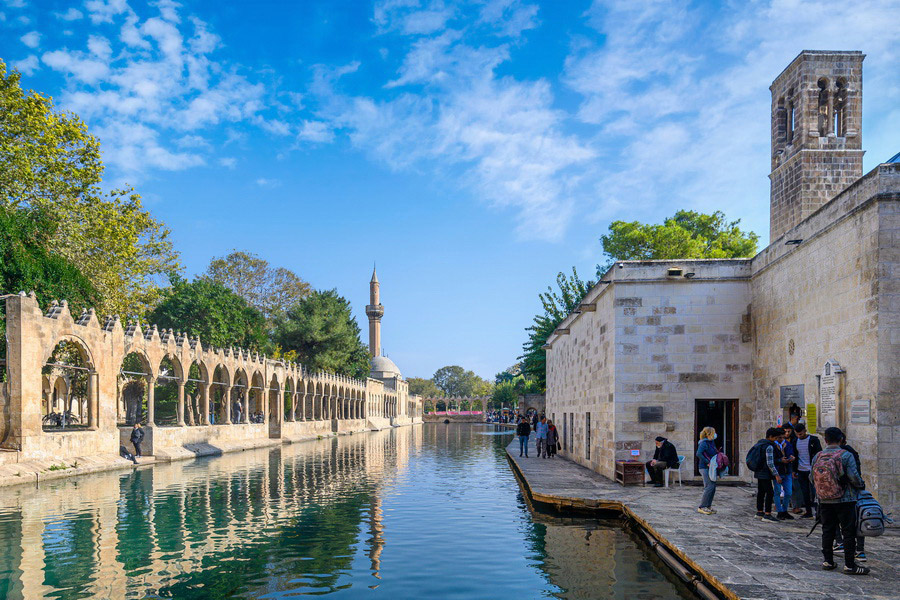
Tours, Places to Visit, and Things to Do in Şanlıurfa
Şanlıurfa Travel Guide
If Turkey (Türkiye) is ever called the heart of early civilisations, it's because of Şanlıurfa – the city of Göbekli Tepe, the world's oldest temple, the birthplace of Abraham, and the settlement of polytheistic communities such as the Sabians and Harranians.
Located fifty kilometres from the Syrian border, under the Mesopotamian sun in the southeastern Anatolian region, it is a city of prophets, conquerors, and forgotten kings. Because of its religious significance, some mention it as the city of faith and the Jerusalem of Anatolia, evidenced in its ancient mosques, stone courtyards, and archaeological sites.
The city itself was founded in 302 BC under the name Edessa, though the signs of the settlements date back to 9500 BC in the face of Göbekli Tepe, which had been standing here to an age before gods had names. It was previously called Urfa after the Ottoman era and renamed Şanlıurfa in 1984 to honour its resistance during the Turkish War of Independence.
In Harran city, cone-shaped mudbrick houses dwell under the open sky as a reminder of scholars who once studied the stars. At Balıklıgöl (Pool of Abraham), sacred fish swim through waters where legend says Nimrod cast Abraham into the flames.
Şanlıurfa's Archaeology and Mosaic Museum, the largest in Turkey, holds relics of forgotten civilisations. The old streets, sculptured from amber stone, lead to mansions rich with Arabic and Ottoman detail. And when the day cools, the city's cuisine takes centre stage – Urfa kebabs, lentil soups, and pistachios.
Visiting Şanlıurfa feels like driving a time machine, with its preserved architecture, ageless history, and tremendous culture.
Şanlıurfa Tours
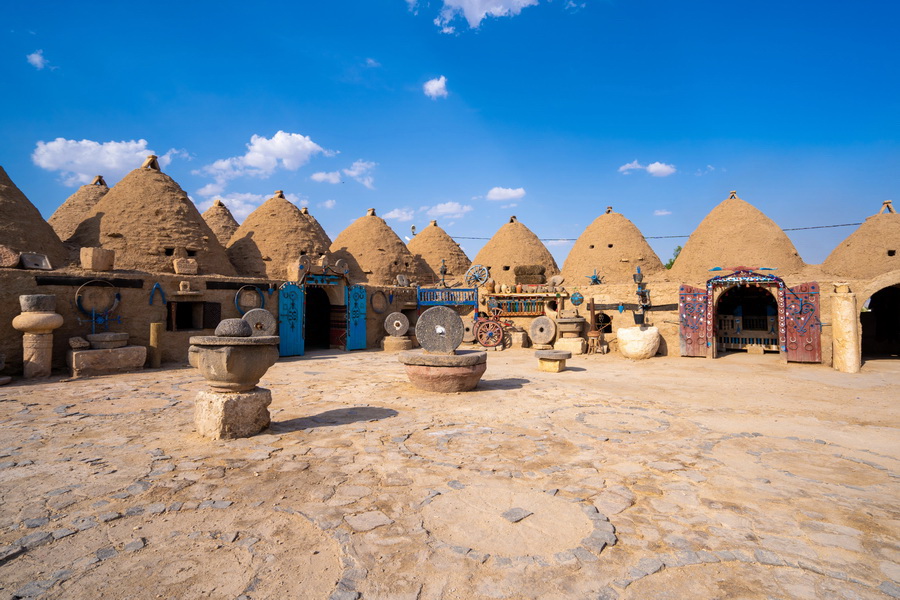
A visit to Sanlıurfa is a journey to the heart of ancient Mesopotamian expanse, surrounded by the golden grasslands of the Harran Plain. Its labyrinthine bazaars, winding alleys, centuries-old mosques, and sacred sites demonstrate the world’s earliest human achievements and escort you through the story of Abraham. Guided Şanlıurfa city tours lead you past the legendary Balıklıgöl – the Pool of Abraham, where ancient miracles are said to have occurred – to the awe-inspiring ruins of Göbekli Tepe, the world’s oldest known temple complex. This city reflects an eternal spirit that has drawn in pilgrims and dreamers alike for centuries.
Best Time to Visit Şanlıurfa
The best time to visit Sanlıurfa is spring (April–May), and the mellow glow of autumn (September–October) makes for ideal seasons and the climate to explore the city. During these months, the heat is gentle enough to wander ancient streets, while the air carries hints of blossoming fruit trees and ripening spices. In contrast, summer can be boiling with temperatures lifting past 40°C, while winter, though cooler and occasionally drizzly, provides a quiet, introspective atmosphere. Plan your trip around local festivals and celebrations for an even more engaging experience of Şanlıurfa tours.
History of Şanlıurfa
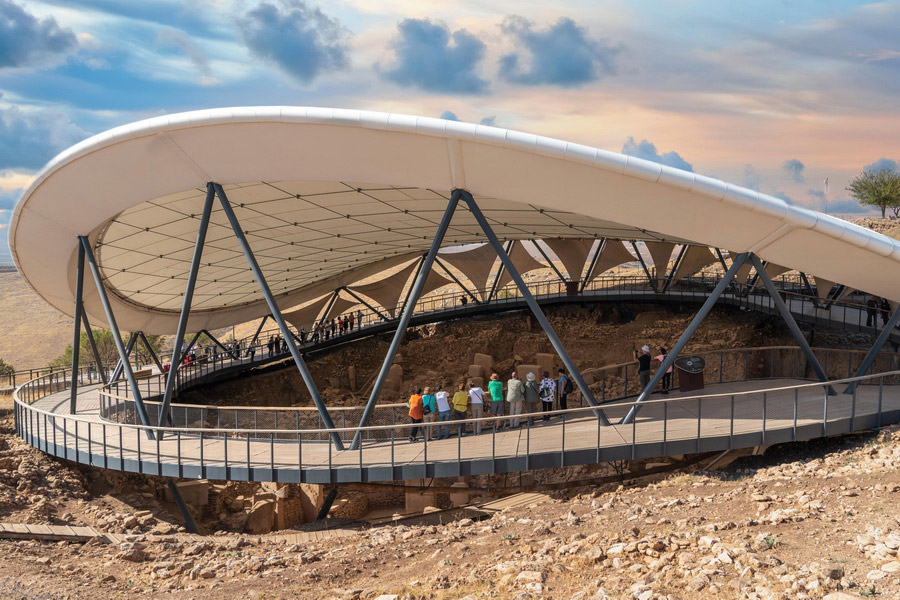
In the shuffle of civilisations, few cities have danced as persistently as Şanlıurfa. Long before Seleucus I Nicator stamped his name on it in 303 BC, there was evidence of settlement–small, unfortified, yet ideally placed in a land that seemed to attract both traders and conquerors. The Seleucid king, nostalgic for his homeland, renamed it Edessa after the Macedonian capital, but the Semitic soul of the city never quite surrendered to Greek ambitions.
As the Seleucid dynasty collapsed, Edessa shifted hands like a prized relic. The Nabataean Abgarid dynasty took charge, ruling as vassals to Parthians, Armenians, and Romans in turn. The city’s strategic position meant it was never left alone for long. In 1098, the Crusaders, led by Baldwin, Count of Boulogne, first Count of Edessa and King of Jerusalem, established the County of Edessa, the first Crusader state in the East. In 1144, the army of Zengi, the atabeg of Mosul and Aleppo, swept in, ending the Crusaders' experiment in Edessa.
Then came the Ayyubids, the Mongols, the Mamluks, the Oghuz Turks Aq Qoyunlu originating from Central Asia, and finally, in 1517, the Ottomans, who, ever the traders, transformed Urfa into a centre for cotton, leather, and jewellery.
The Pre-Pottery Neolithic site at Yeni Mahalle Höyüğü, within the ancient town centre of Şanlıurfa, radiocarbon-dated to 9400–8600 BC, hints at a settlement of early cultivators and hunters. Not far away, Göbekli Tepe, humanity’s oldest temple, rewrote the script of early civilisation.
Once following the Hellenistic grid, its people worshipped Atargatis, Nabu, and Bêl. Judaism blossomed here, then Christianity took root in the 2nd century, and, by Abgar the Great’s rule, it was a Christian state – the first, some say. Rome’s emperors, including Trajan and Septimius Severus, knew the city well. It became a Roman client state, then a province, then a battlefield between Rome and Parthia, its kings flipping allegiances like merchants weighing their profits.
Urfa, a crucial trade and cultural epicentre, witnessed waves of political and social turmoil. It became a battleground during World War I, falling under British and then French occupation before fierce local resistance led to its liberation in 1920. This defiance earned the city the honorary title "Şanlı" (Glorious), forever marking its role in Turkey’s War of Independence led by Atatürk.
What to Do in Şanlıurfa?
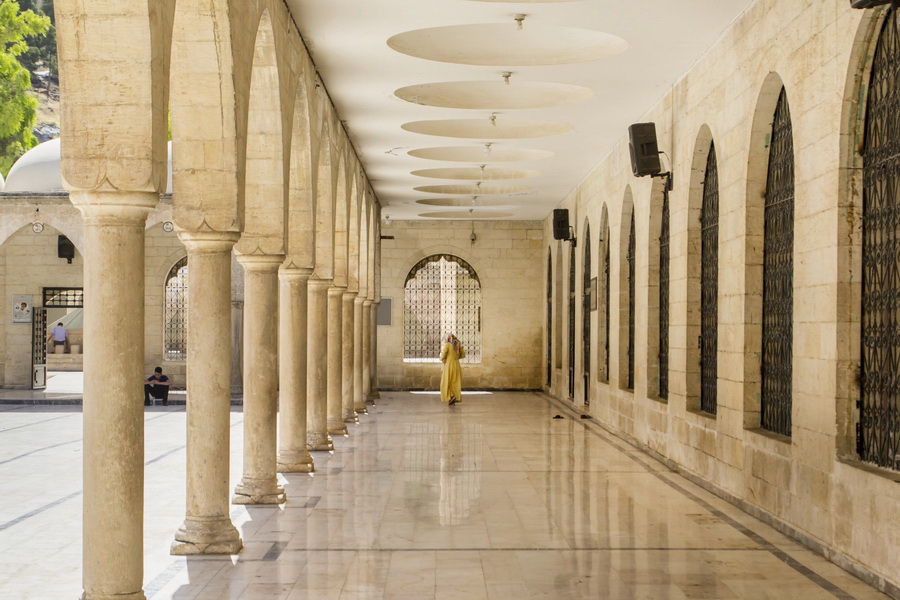
Landmarks and Places to Visit in Şanlıurfa
Most of the landmarks and attractions in Şanlıurfa are deeply intertwined with the city's religious past, where every monument and relic is tied to its glorious history.
Twelve thousand years ago, long before pyramids or temples, hunter-gatherers challenged time and logic by erecting the colossal stone pillars of Göbeklitepe. No metal, no agriculture, no cities; still, they sculpted T-shaped monuments with sophisticated animal carvings, crafting the world’s oldest known religious sanctuary. Astonishingly, Göbeklitepe predates the domestication of wheat, a fact that baffles scientists, as settled life and construction are often tied to agriculture. Excavated only recently, this Neolithic wonder rewrote history, proving prehistoric people gathered not just to survive, but also to believe. A UNESCO World Heritage Site since 2018, Göbeklitepe invites you to head into humanity’s oldest enigma.
In the heart of the city lies Balıklıgöl, a sacred lake tied to a famous legend. According to tradition, Prophet Abraham was thrown into a fire here, but the flames miraculously turned into water, and the embers became fish; these fish are now considered sacred. Next to it, Ayn-ı Zeliha Lake (Ayn Zeliha Gölü) is linked to another tale: Nimrod’s daughter, Zeliha, was cast into the same fire for her faith, and the myth says that this lake is formed from her tears. Overlooking both is Şanlıurfa Castle (Şanlıurfa Kalesi), where you will encounter historic 17-meter-high Corinthian columns.
Şanlıurfa’s domed houses, especially the iconic conical domes of Harran, have been standing there for more than centuries. Made from rose leaves, straw, and clay, they stay cool in summer and warm in winter. Hidden beneath modern homes for centuries, Kızılkoyun Necropolis (Kızılkoyun Nekropolü) now reveals its secrets: 72 rock-hewn tombs decorated with pagan, Roman, and early Christian art. Just an hour's drive from Şanlıurfa, Soğmatar Ancient City (Soğmatar Antik Kenti) is a mysterious site that once served as a religious centre in the 2nd century. Here, people worshipped the sun, moon, and planets, believing them to be powerful deities. Instead of stone tablets, prayers were carved directly into the rock in the Syriac language, addressing Mare-Lahe, the supreme god. According to legend, even Moses may have once lived and worked on this land.
Fırfırlı and Selahaddin Eyyubi Mosques were once magnificent churches, reflecting the city’s transition from Byzantine Christianity to Ottoman Islam. Fırfırlı Mosque was originally the Twelve Apostles Church, and traces of its Christian past can still be seen. Selahaddin Eyyubi Mosque, formerly St. John the Baptist Cathedral, has stood for centuries, making it one of the top destinations for Şanlıurfa city tours.
Museums in Şanlıurfa
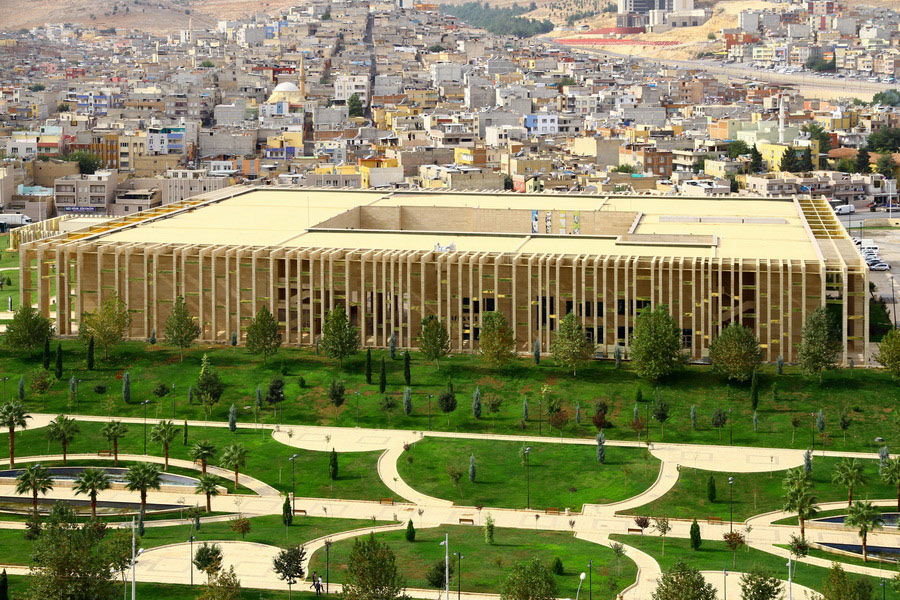
At the heart of the city is the Şanlıurfa Archaeology and Mosaic Museum (Şanlıurfa Arkeoloji ve Mozaik Müzesi), Turkey’s largest museum complex. A labyrinth of time, it houses relics from prehistoric eras to modern days, including the Urfa Man (Urfa Adamı or Balıklıgöl Heykeli) – the world’s oldest known statue. Göbeklitepe’s Temple of Enclosure D stands here in miniature, alongside the sacred artefacts of Nevali Çori. Next door, the Haleplibahçe Mosaic Museum (Haleplibahçe Mozaik Müzesi) dazzles with mythological Amazonian huntresses and the enigmatic Orpheus Mosaic.
The Çarmelik Caravanserai Rural Life and Agriculture Museum (Çarmelik Kırsal Yaşam ve Tarım Müzesi) in Büyükhan Village documents the region’s agrarian past. Antique tractors, farming tools, and handwoven rugs describe centuries of labour. Occasionally, the museum features seasonal farmer training sessions.
The Urfa City Museum (Mahmudoğlu Kulesi), the tower of an 1122 Crusader fortress turned Ottoman stronghold, has chronicled Şanlıurfa’s social, economic and geographical evolution.
The Culinary Museum (Hacıbanlar House) or Mutfak Müzesi (Hacıbanlar Evi) is a tribute to Urfa’s legendary cuisine. Traditional table settings, vintage kitchen tools, and interactive cooking classes make it a feast for both the eyes and the palate. İbrahim Tatlıses Music Museum (İbrahim Tatlıses Müzik Müzesi), housed in a historic coffeehouse, honours Urfa’s musical soul.
Once a hub of science and faith, its crumbling walls still murmur the name of Prophet Abraham.
44 km from Şanlıurfa, there’s the Harran Archaeological Site where the ancient civilisations met. Once an essential heart for art and science, the area spotlights the ruins of the city of the same name, which is referred to in the scriptures as the city of Prophet Abraham.
With Museum Pass Türkiye, giving you access to around 350 museums around the country during 15 days, you can enjoy a comfortable museum experience without long queues and standing in the lines. Additionally, there are more options of Museum Passes in Turkey, oriented on specific cities and regions.
Şanlıurfa Theatres
Şanlıurfa, the city of prophets and poets, was officially recognised as a UNESCO City of Music.
Urfa Art Theatre breathes new life into traditional narratives, while the Şanlıurfa Metropolitan Municipality City Theatre (Şanlıurfa Büyükşehir Belediyesi Şehir Tiyatrosu) stages productions that blend humour, folklore, and contemporary themes. The city’s theatres feature folk plays steeped in legend and modern dramas that reimagine centuries-old tales.
A prime example of this creative spirit is the Metropolitan Municipality City Theatre under the direction of Artistic Director Hasan Ocakoğlu. One of its standout productions, Ordinary Extraordinary Stories, a one-man comedy show written and performed by Ocakoğlu himself, captivated audiences, including Şanlıurfa Metropolitan Municipality Mayor Mehmet Kasım Gülpınar, proving that the city’s theatrical offerings are as dynamic as its legendary past.
Entertainment, Parks, and Shopping in Şanlıurfa
Entertainment in Şanlıurfa is an eclectic compound of the old and the new. The city’s entertainment scene is defined by its traditional music houses, where locals gather for the traditional sıra gecesi (Sira Night in Şanlıurfa), which are evenings filled with live music, impassioned poetry, and heartfelt dance that encapsulate the very essence of Şanlıurfa tourism. Cultural festivals, held throughout the year, further enrich this experience with displays of folk dance, regional music, and ancient rituals that have been preserved through generations.
Parks in Şanlıurfa
Sometimes referred to as the Open-Air Museum, Şanlıurfa parks are a combination of historical spectacles and a welcoming retreat.
Gölbaşı Park, the city's green heart, holds the famous Balıklıgöl. The surrounding cafés, shaded by old trees, serve the famed Menengiç coffee, a pistachio-infused delight even for those indifferent to caffeine.
In Kasaptaşı Parkı, you will hear birdsong, people murmuring, enjoy the clean air, and can also engage in occasional philosophical debate. Evening walks here are a ritual, an unwritten tradition of Urfa’s residents.
Gölpınar Tabiat Park, a nature reserve where the city’s heat surrenders to cool, pine-scented breezes, is perfect for picnics. In Yeşilvadi Park, families gather, children chase the wind, and the simple joy of a weekend unfolds.
Shopping in Şanlıurfa
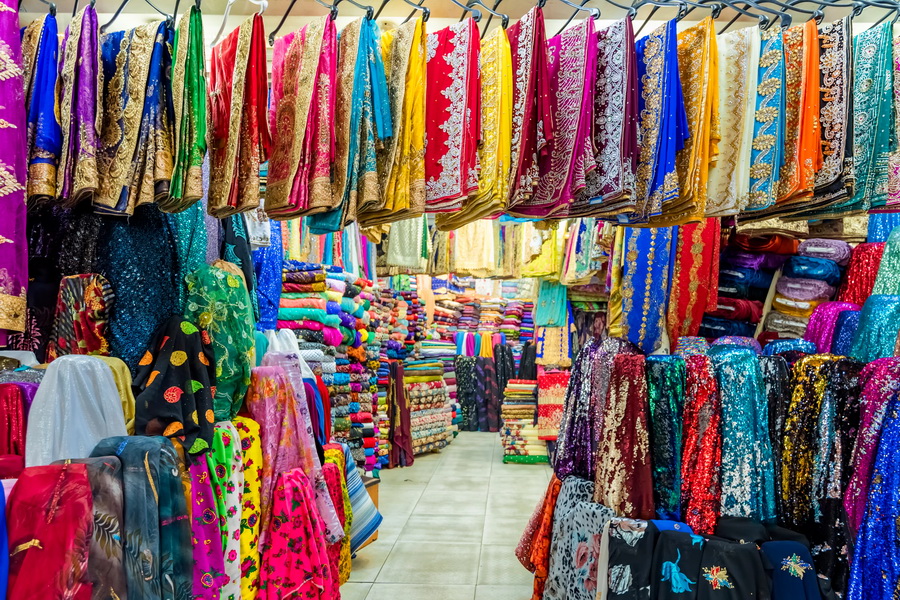
A city as ancient as time itself, Şanlıurfa is no stranger to trade. From the silk-laden caravans of old to today’s swarming shopping centres, it remains a paradise for those who seek the charm of tradition and the pulse of modernity.
Şanlıurfa Piazza Shopping and Life Centre is the city’s largest retail point, where global brands rub shoulders with local riches. Opened in 2013, this complex features 22 cafes and restaurants. It’s the perfect place to grab a bite between hunts for fashion, electronics, and souvenirs.
For a more family-friendly atmosphere, Novada Park Şanlıurfa joins urban entertainment with nature. Located beside 11 Nisan Şehir Parkı, it brings forward playgrounds, theme park attractions and cultural events.
UrfaCity AVM is stretched around 33,000 square meters, housing world-renowned brands, a cinema, game centres, and spacious cafes. With indoor and outdoor seating, smoke-free zones, and a 400-vehicle parking capacity, it ensures comfort for all visitors.
Yet, no shopping adventure in Şanlıurfa is complete without immersing yourself in history. In the Grand Historical Bazaar (Şanlıurfa Tarihi Kapalı Çarşı), built in 1562, handcrafted jewellery, textiles and spices are deployed at timeworn stalls and in the Kınacı, Tütüncü, Pamukçu, and Kuşçu Bazaars, pigeon enthusiasts trade feathered beauties.
Food in Şanlıurfa
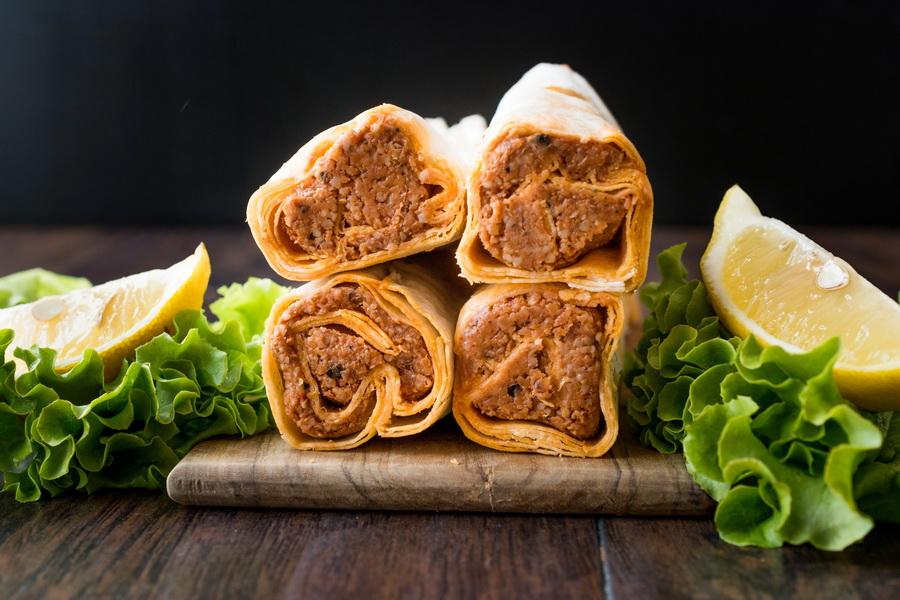
Deeply rooted in history, Şanlıurfa was a nominee for UNESCO City of Gastronomy. From fiery spices to slow-roasted meats, every dish in the city conveys centuries of tradition, making it a paradise for food lovers and a highlight of any Şanlıurfa travel guide.
Turkish Cuisine
Urfa’s culinary magic is manifested in its smoky liver kebabs, spice-laden stews and mouth-watering pastries. Kebabs are dominant, with varieties such as Urfa Kebab, aubergine Kebab and Tirit, a soul-warming mix of tender meat. But for the adventurous, Dalak (grilled lamb’s spleen) is a must-try with its crispy exterior and velvety flavours inside.
Spices play a starring role, especially Urfa isot pepper, a sun-dried chilli that gives dishes their signature smoky heat. Combined with sumac, za’atar, and pomegranate syrup, these senses turn simple ingredients into unforgettable feasts. Local favourites include söğürme (roasted aubergine salad), kuru dolma (stuffed dried vegetables) and lebeni – a refreshing cold yoghurt soup ideal for hot Urfa days.
Top restaurants and chefs in Şanlıurfa are Urfa Sofrası, an acclaimed place for substantial and home-style meals, serves a wide spectrum of local dishes, from appetising kebabs to toothsome mezes; Cevahir Han, one of the best Urfa kebabs; and Chef Osman Yüksekyayla who runs Livva Restaurant, a well-known eatery with 112,000 Instagram followers. Locals praise it for its cleanliness and say it’s a great place for families to dine.
Vegetarian Restaurants
Meat dominates Şanlıurfa’s tables, but vegetarians won’t go hungry. The legendary çiğ köfte, originally a raw meat dish, is now enjoyed in a vegetarian form made with bulgur, tomato paste, and isot pepper. Borani, a creamy mix of spinach, yoghurt and spices, is another delicious alternative. For quick bites, you should try semsek, a deep-fried pastry filled with cheese and herbs. Cevahir Han Restauran additionally provides palate-pleasing vegetarian dishes.
Coffee Houses, Bakeries, and Patisseries

A journey through Şanlıurfa isn’t complete without its coffee culture. Mırra, a bitter, double-brewed coffee, is a symbol of hospitality and ideally enjoyed in a traditional copper cup. For sweets, try katmer, a pastry with syrup and local cheese or şıllık, Urfa’s take on syrup-soaked pancakes with walnuts. Baklavacısı Şanlıurfa is the place to go for baklava, while Urfa Yörem Baklaveri has been catering traditional baklava since 1995.
City Transport in Şanlıurfa
Navigating Şanlıurfa is efficient because of its variety of transport options that cater to both locals and visitors.
Public Transport
Buses and dolmuş (shared minibuses) form the backbone of the city public transport system. A dedicated Şanlıurfa transport card simplifies your journeys, allowing you to move seamlessly from one historical site to another.
Buses and Shuttles
Five kilometres north of Şanlıurfa, where the road stretches toward Diyarbakır, stands the city’s bus station. Reaching the heart of the city is easy – a city bus or one from Atatürk Caddesi takes you there. But don’t forget your UrfaKart, valid for just two rides.
Below the station, minibuses move along the city’s arteries. Meanwhile, the city’s trolleybuses glide along a 78-km planned network, linking the centre to the museum district, which also requires an UrfaKart.
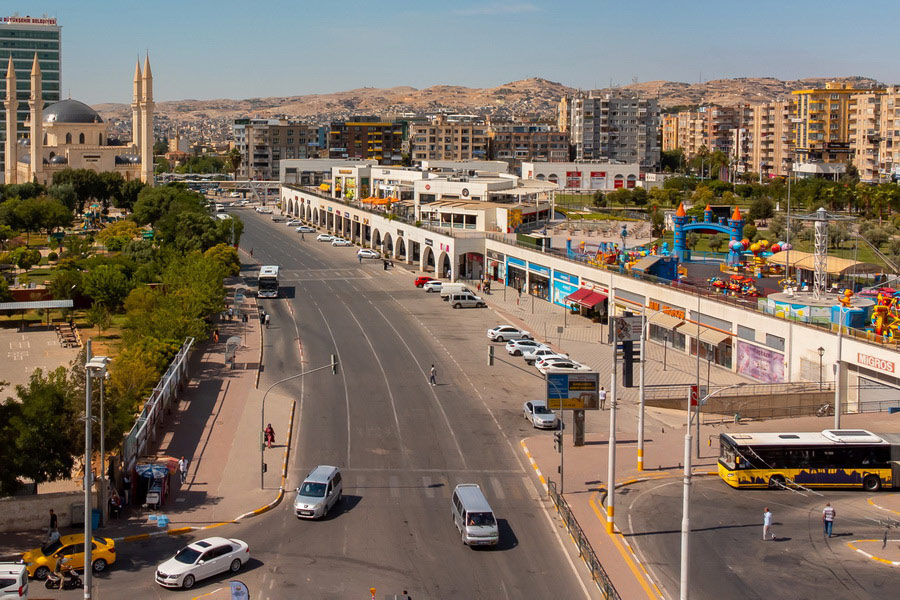
Taxis
Şanlıurfa’s cabs are easily found in the city centre and near major attractions. Meters are standard, but always check before the ride begins. Also, popular apps like iTaksi, Uber, and others operate here, making it effortless to hail a car. Whether you're heading to Şanlıurfa’s historical sites or searching for the best local cuisine, taxis are swift.
Car Rental
To explore this ancient town at your own pace, renting a car is your golden ticket. With options like Enterprise, Budget, Şanlıurfa Rent a Car, and Bulut Rent a Car, you’ll find a ride that suits your needs. Most rental services in Turkey, including Şanlıurfa, require drivers to be at least 26 years old. Daily rates hover around 40–50 euros, making it a practical choice for those eager to uncover Şanlıurfa’s culture without the constraints of public transport.
Other Modes of Transportation
In the more pedestrian-friendly parts of the city, walking is not only practical but also a pleasure. Bicycle rentals and, in some areas, even electric scooter options are emerging as modern ways to experience Şanlıurfa’s winding streets and hidden alleys.
How to Get to Şanlıurfa
The city is well-connected by several modes of transportation, making it accessible no matter where your journey begins.
By Air
The Şanlıurfa GAP Airport serves as the main gateway, with frequent domestic flights connecting to major points like Istanbul, Ankara, and beyond. Its modern facilities and efficient services ensure a smooth arrival into the heart of the city.
By Road
Well-maintained highways link Urfa with neighbouring cities such as Gaziantep, Adana, and Diyarbakır. Whether you drive yourself or take a bus, the journey guarantees scenic vistas of southeastern Turkey’s colourful landscape.
By Bus
Long-distance buses from all over Turkey provide an economical and comfortable way to reach Şanlıurfa. Bus terminals in major cities are well-connected with regular services that drop you off right at the city’s doorstep.
Languages Spoken in Şanlıurfa
Turkish is the predominant language in Şanlıurfa, used in daily conversation and by the tourism industry alike. However, due to its location and diverse cultural heritage, Kurdish and Arabic are also widely spoken throughout the city. In the ancient quarters, remnants of other languages such as Aramaic are evident. While English is understood in tourist spots and by younger generations, a few basic Turkish phrases will enrich your interactions and deepen your connection with Şanlıurfa culture.
Currency in Şanlıurfa
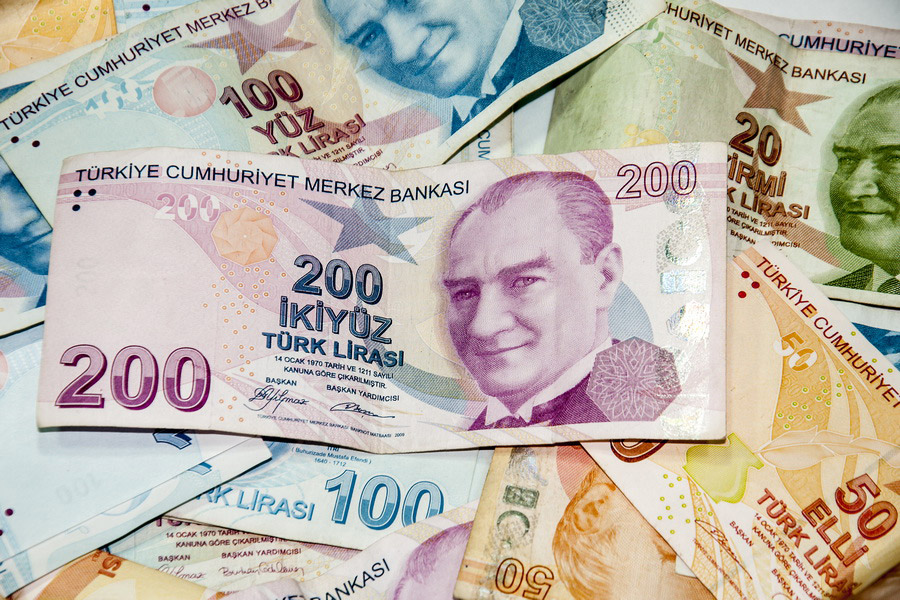
The official currency in Şanlıurfa is the Turkish Lira (TRY). Travellers will find that ATMs and exchange bureaus are plentiful, especially in busy areas like the airport, modern shopping centres, and near major tourist attractions. Credit and debit cards are widely accepted in hotels, upscale restaurants, and modern retail outlets. However, in the traditional bazaars and local markets, cash remains the preferred medium of exchange. Efficient money exchange options ensure that managing your travel budget while visiting Şanlıurfa is both convenient and secure.
Security in Şanlıurfa
Şanlıurfa is generally regarded as a safe and welcoming destination for travellers. The city’s long history of hospitality is matched by a modern commitment to security and public safety. The local community’s warm nature and the visible presence of law enforcement provide additional assurance for a worry-free experience. Visitors can therefore explore Şanlıurfa with confidence, knowing that its rich culture is complemented by a secure and hospitable environment. Although Turkey is a secular country, Şanlıurfa is deeply rooted in religious and conservative traditions. Visitors should dress modestly and be mindful of local customs to show respect for the city’s cultural values.

